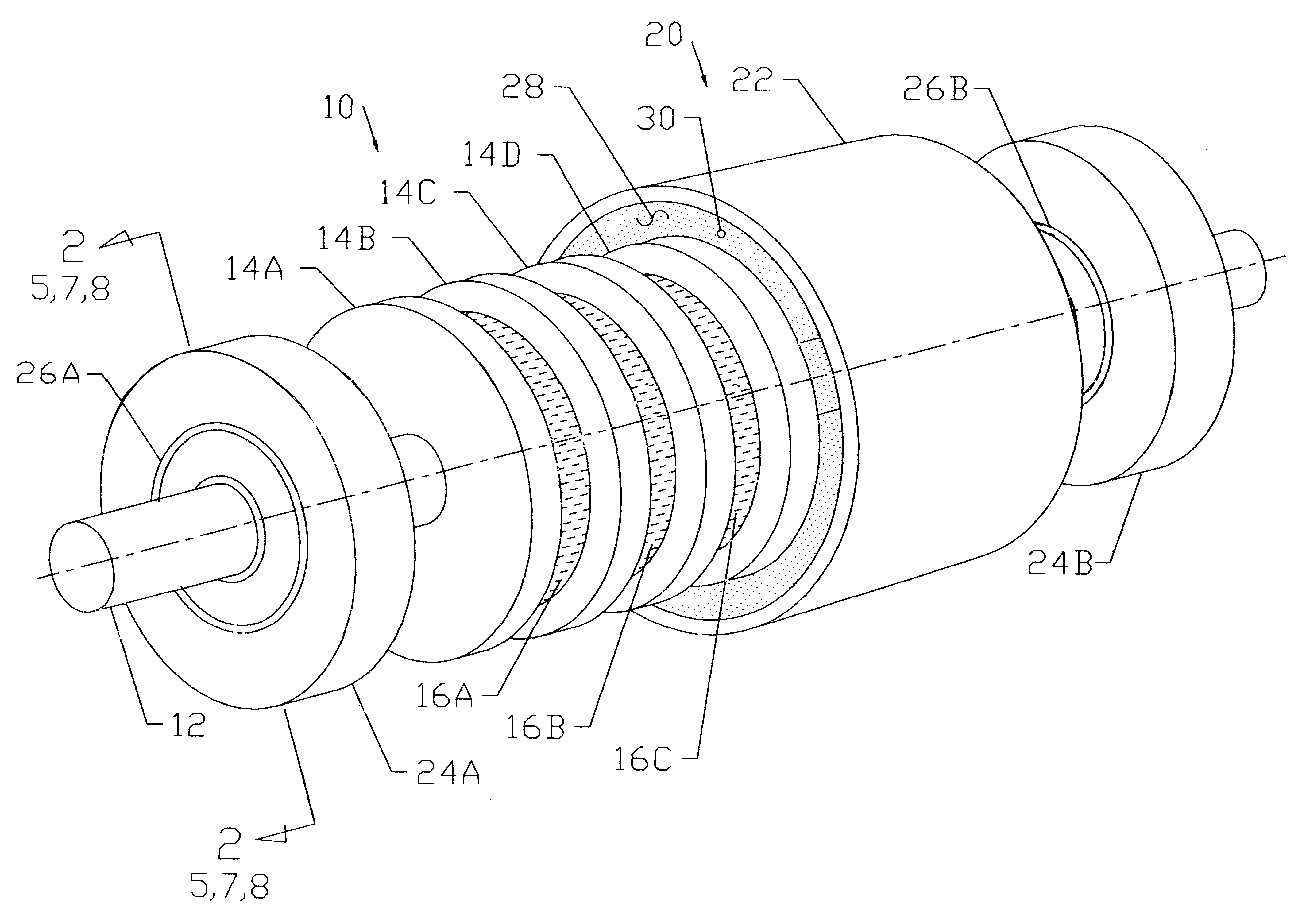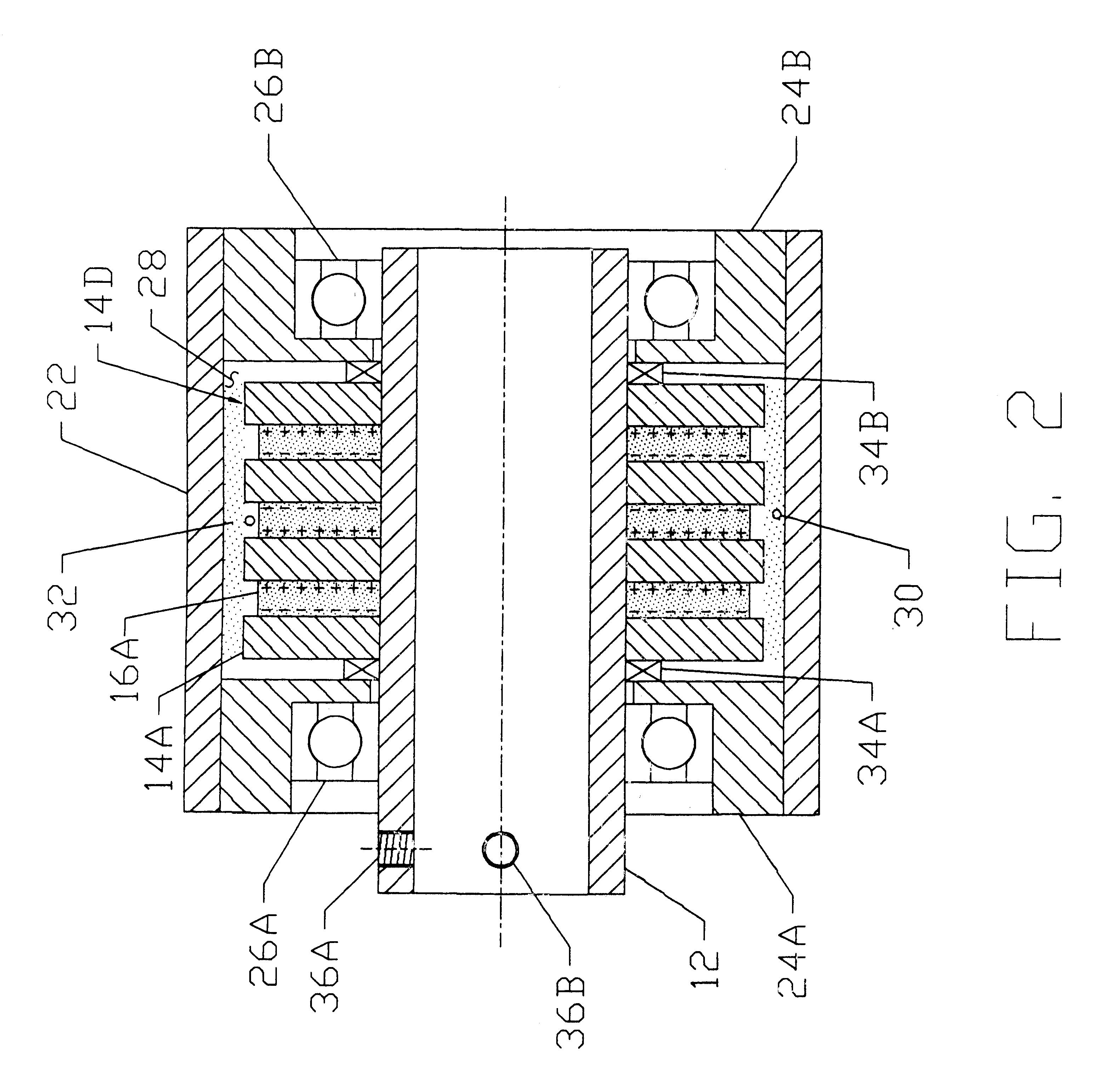Magnetic circuit
a technology of magnetic circuits and circuits, applied in the direction of magnets, magnetic bodies, mechanical apparatus, etc., can solve the problems of many internal parts, complex designs, and difficult to meet the requirements of economical manufacturing and assembly procedures, and achieve the effect of maximizing torque and heat dissipation
- Summary
- Abstract
- Description
- Claims
- Application Information
AI Technical Summary
Benefits of technology
Problems solved by technology
Method used
Image
Examples
Embodiment Construction
. 1-2
A perspective view of a typical embodiment of the clutch is shown in FIG. 1. The device comprises a shaft assembly 10. The shaft assembly consists of a rotary shaft 12 with a series of round washers 14A, 14B, 14C, and 14D pressed onto the shaft. These washers are made of low carbon (eg. AISI 1018) steel and are magnetically conductive. The thickness is approximately 1 / 15 the washer's outer diameter. A ring magnet 16A, 16B, and 16C is placed between each washer. The diameter is slightly less than the washer's diameter. The magnet's thickness is approximately 1 / 15 its diameter. "High-energy" magnets which have a typical energy product of 27 mega-gauss oersteds are used. The material composition is neodymium, iron, and boron. The magnets 16 are bonded to the washers 14 with a suitable adhesive. The magnets 16 are magnetized through the thickness with each face being of opposite magnetic polarity. They are bonded to the washers 14 with like poles facing each other.
FIG. 1 also shows...
PUM
 Login to View More
Login to View More Abstract
Description
Claims
Application Information
 Login to View More
Login to View More - R&D
- Intellectual Property
- Life Sciences
- Materials
- Tech Scout
- Unparalleled Data Quality
- Higher Quality Content
- 60% Fewer Hallucinations
Browse by: Latest US Patents, China's latest patents, Technical Efficacy Thesaurus, Application Domain, Technology Topic, Popular Technical Reports.
© 2025 PatSnap. All rights reserved.Legal|Privacy policy|Modern Slavery Act Transparency Statement|Sitemap|About US| Contact US: help@patsnap.com



